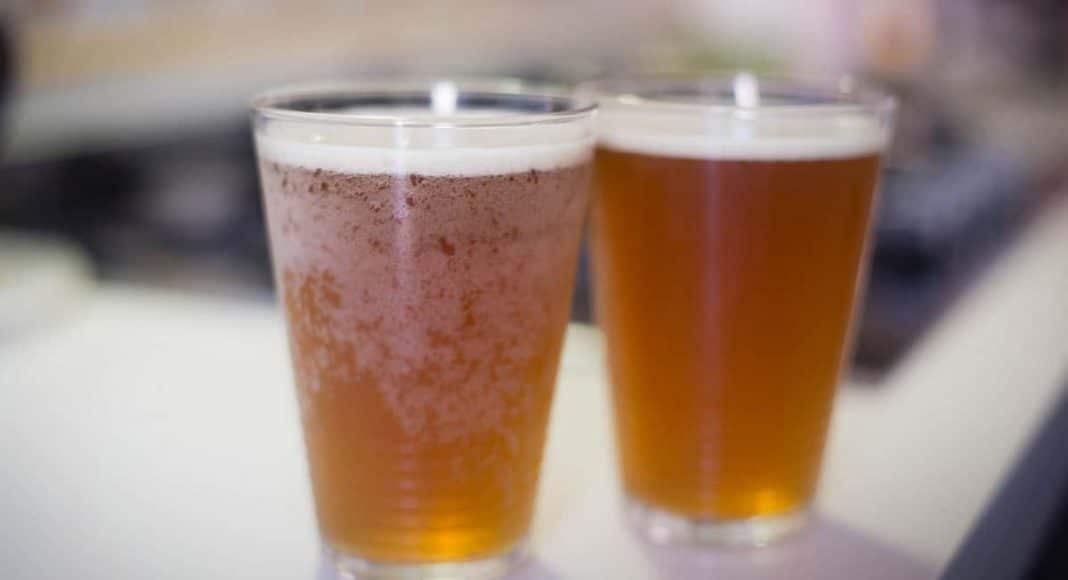In the world of craft beer, there are a lot of choices. Plopping down at the bar, you’re often faced with the decision between an IPA, Stout or something lighter. But the choice that often seems most scary to craft beer drinkers is the mysterious Sour Ale. “What the heck is it, how did they infiltrate our otherwise straightforward tap handles and should I ever order one?” These are the questions on the tips of many thirsty tongues. So, let’s get to the facts, shall we? Let’s enter the Sour Ales 101 course we’ve always wanted to attend. And by the end of it we’ll all be on the Honor Roll (aka tipsy).
1. There Are Entire Breweries Dedicated To Sour Ales
https://www.instagram.com/p/BNQDJyFB1xg/
In Portland, Oregon, for example, Cascade Brewing Barrel House specializes in tart, barrel-aged Northwest sour beers. “Pucker up and join the sour revolution!” the brewery’s web site eagerly states.
-
Related Story: 11 Of The Best Cheap Beers In America, Ranked
That there are entire entities devoted to sour ales, means something’s brewing – er, happening. Some of the options on tap at Cascade include a 7.2% ABV Apricot Sour and an 8.5% ABV Blueberry version.
2. Sour Ales Were The Original Beer
When the brewing process began many hundreds of years ago, all beers were sour to a degree. Before cleanliness was prioritized (aka pasteurization), cultures would enter the brewing process and ferment the brew to such a degree that it would taste overly acidic and puckery.
3. Typically, Sours Take A Long Time To Make, But There Are Shortcuts
https://www.instagram.com/p/BE_fSXFFqLL
“Kettle sours,” made in brew kettles, different from traditional Old World wild sours, are becoming more prevalent. Found in many breweries today, kettle sours take only two weeks to create but use the same sort of bacteria as Old World (traditional) sours.
-
Related Story: How The Lack Of POC In Brewing Is Hurting The Industry
The brewing method is different, though: with traditional sours, microbes that turn sugar to acidity are added after the beer has fermented; in kettle-souring they’re added before, then the mixture is boiled and the souring agent is killed, making this process even safer for neighboring beers. But kettle sours, many say, are weaker and less nuanced. In other words: cheaper.
4. Yogurt Can be Utilized In The Brewing Process
Yep! During the 3rd Annual Portland Fruit Beer Festival, The Commons Brewery made a sour ale using black currant puree. The brewery’s Master Brewer, Sean Burke, soured the beer with lactobacillus, but cultured the bacteria from yogurt by taking a spoonful of Nancy’s Greek yogurt and pitching it into the sour’s starter.
5. There Are Many Versions Of Sour Ale
https://www.instagram.com/p/BFFVDObnDmC
Including: Lambic (sour wheat ale, some come fruited, others sweet and low ABV), Flanders Red (made with reddish-brown malts, tart and aged for years), Berliner Weisse (tart, cloudy wheat ale – similar to the original beer), and Gose (dry).
-
Related Story: Holy S***! Brewery Makes Beer With Recycled Sewer Water
Three good sours to try: Lindemans Lambic Framboise (a low alcohol, dessert sour, perfect for after diner), Duchesse De Bourgogne (a Flanders Red and entry-level sour for anyone curious to try the style), and Lagunitas’ Aunt Sally (a smooth, hoppy sour).
6. Sour Ales Make Your Tongue Do Twists It’s Not Used To
So be prepared. Even when you’re expecting the flavor, Sour Ales are not what you’d expect once they splash over your tongue. In other words, they’re often an acquired taste. Worth acquiring, but brace yourself nevertheless!
[gravityform id=”13″ title=”false” description=”true”]


